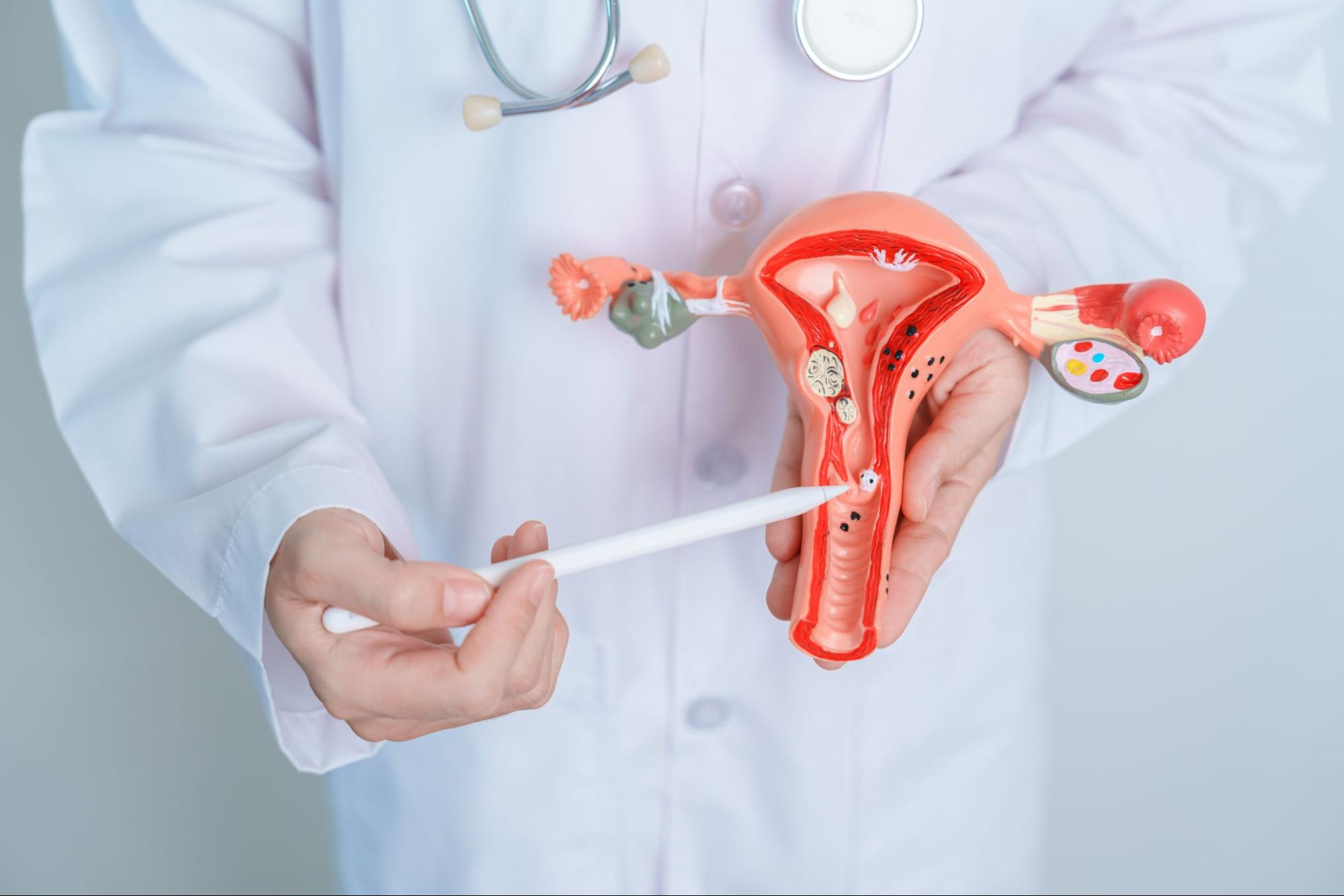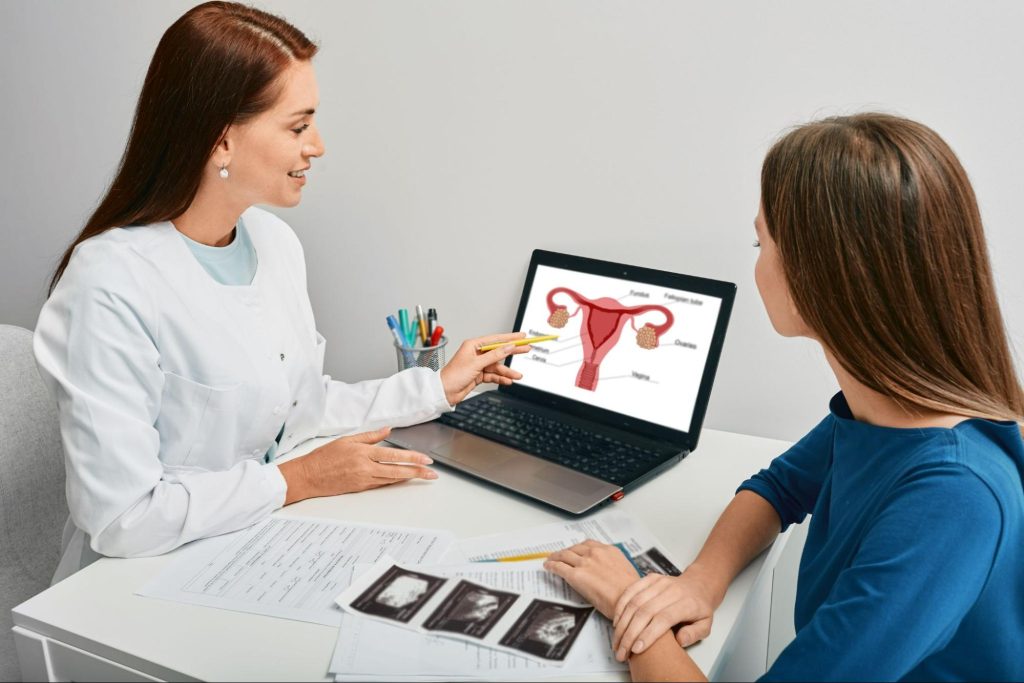Uncategorised / uterine artery embolization
How Uterine Artery Embolization is Revolutionizing Fibroid Treatment

by admin
26th September 2023
7 minutes read
Uterine fibroids, also known as uterine leiomyomas, are common non-cancerous growths in the uterus that can cause considerable discomfort and concern among women. Historically, the treatment of uterine fibroids has included invasive procedures such as hysterectomy and myomectomy. However, a new, less invasive procedure, uterine artery embolization (UAE), is becoming the preferred method for many women and doctors. This innovative approach is shifting the paradigms in fibroid uterus treatment and has significant implications for women’s health.
Understanding Uterine Fibroids and Symptoms
To understand why UAE is revolutionary, it’s essential to first comprehend what uterine fibroids are, their causes, and their symptoms. Uterine fibroids are non-cancerous growths that develop from the muscle tissue of the uterus. These can range in size from small seedlings to large fibroids that can alter the shape and size of the uterus.
The causes for fibroids are not entirely understood, but factors such as hormonal changes, particularly in estrogen and progesterone, and genetic alterations are implicated in their development. It’s also known that African-American women are more likely to develop fibroids than women of other races.
Uterine fibroid symptoms can vary significantly. Some women may not experience any noticeable symptoms, while others might suffer from heavy or painful periods, discomfort in the pelvis area, frequent urination, pain during intercourse, lower back pain, and complications during pregnancy. In some cases, uterine fibroids can mimic uterus tumor symptoms, causing undue worry about potential malignancy.
Traditional Treatment Methods for Uterine Fibroids

When it comes to traditional treatment methods for uterine fibroids, physicians typically have a range of options to consider based on the severity of symptoms, the size and location of the fibroids, the patient’s overall health status, and their desire to preserve fertility. The conventional treatment methods include:
1. Watchful Waiting:
If the fibroids are small and not causing any symptoms, or if the patient is nearing menopause (when fibroids tend to shrink), the doctor may recommend watchful waiting. This involves regular check-ups to monitor the fibroids but no active treatment.
2. Medication:
Various medications can be used to manage the symptoms of fibroids. These include:
- Hormone therapy: Medications like birth control pills or progesterone can help regulate menstrual cycles and reduce heavy bleeding and pain.
- Gonadotropin-releasing hormone (GnRH) agonists: These drugs can stop the menstrual cycle and reduce the size of the fibroids. However, they may cause menopausal symptoms and can only be used for a short period (typically not more than six months) because they can increase the risk of osteoporosis.
- Nonsteroidal anti-inflammatory drugs (NSAIDs): Over-the-counter pain relievers like ibuprofen can help with fibroid pain.
3. Myomectomy:
This is a surgical procedure to remove fibroids while leaving the uterus intact, which preserves the possibility of future pregnancy. Myomectomy can be performed using several methods, including laparotomy (an open surgery), laparoscopy (using small incisions and a camera), or hysteroscopy (through the vagina and cervix). The approach depends on the size, number, and location of the fibroids.
4. Hysterectomy:
This involves the removal of the entire uterus. It’s the only treatment that guarantees the fibroids won’t return, but it also means that pregnancy is not possible after this surgery. This procedure is usually considered a last resort, reserved for when fibroids are very large, symptoms are severe, or other treatments have been ineffective.
5. Uterine Fibroid Embolization (UFE):
While it’s a more modern treatment, UFE has become a part of the traditional approach. It involves inserting a catheter into the uterine arteries to deliver small particles that block the blood supply to the fibroids, causing them to shrink and die.
The choice of treatment depends on a variety of factors, including the patient’s symptoms, the size and location of the fibroids, the patient’s age and overall health, and their desire to have children in the future. A healthcare provider can help determine the most appropriate treatment option for each individual patient.
Uterine Artery Embolization: A Revolutionary Approach
Uterine artery embolization (UAE) is a relatively new procedure that has been gaining recognition as an effective treatment for fibroids. UAE is a minimally invasive procedure that works by blocking the blood supply to the fibroids, causing them to shrink and eventually die.
In UAE, a small incision is made in the groin or wrist, and a catheter is guided through the blood vessels to the uterine artery. Tiny particles are then injected into the artery to block the blood flow to the fibroids. This embolization treatment causes the fibroids to shrink over time, reducing or eliminating symptoms.
UAE has several advantages over traditional surgical procedures. It is less invasive, doesn’t involve general anesthesia, and has a shorter recovery time. Moreover, because the uterus is left intact, women still have the possibility of becoming pregnant after the procedure.
The Effectiveness of Uterine Artery Embolization
Research on UAE has shown promising results. Many women report a significant improvement in their symptoms, such as reduced heavy menstrual bleeding and pelvic discomfort. In addition to symptom relief, studies have shown that UAE is effective at shrinking fibroids.
One study found that 85-90% of women who underwent UAE reported improvement or resolution of their fibroid symptoms. This has substantial implications for women seeking fibroid treatment, particularly those wishing to preserve their fertility.
Conclusion
Despite the promising results, UAE is not suitable for all women with fibroids. Some fibroids, such as submucosal fibroids, may not respond well to UAE. Additionally, UAE may not be suitable for women with a large number of fibroids or very large fibroids. Thus, the decision to opt for UAE should be made in consultation with a healthcare provider, taking into account the specific characteristics of the fibroids and the woman’s individual health status and preferences.
Nevertheless, the introduction of UAE has undoubtedly revolutionized fibroid uterus treatment. It provides an effective and less invasive alternative to surgery, greatly improving the quality of life for many women living with fibroids. As more research is conducted, and as the procedure becomes more widely available, UAE will continue to change the landscape of fibroid treatment, offering hope to women worldwide.
How Can Medfin Help?
Medfin is a daycare surgery expert providing access to the latest surgical procedures and top doctors in your city at affordable prices. Medfin provides you access to top doctors and surgeons with 10+ years of experience . With Medfin, you can leave your hassles behind and focus on your health. From instant consultations to paperwork assistance, we have got you covered with everything. So why wait? Call us today!
FAQ’s
While UAE typically reduces the size of fibroids significantly and alleviates symptoms, it’s possible for new fibroids to develop in the future. Regular follow-up appointments can help monitor this.
Yes, pregnancy is possible after UAE. However, the procedure may potentially affect fertility in some ways, and the overall effects of UAE on fertility and pregnancy outcomes are still under study. Therefore, it’s important to discuss this with your healthcare provider if you plan to have children in the future.
While UAE typically reduces the size of fibroids significantly and alleviates symptoms, it’s possible for new fibroids to develop in the future. Regular follow-up appointments can help monitor this.
No, uterine fibroids are benign, or non-cancerous, growths. However, in rare cases, a cancerous fibroid can occur. These are known as leiomyosarcomas but are not thought to arise from existing fibroids.
Yes, research has shown that UAE is an effective treatment for fibroids, with many women reporting significant improvement or resolution of their symptoms. However, it may not be suitable for all women, particularly those with very large or numerous fibroids.
CATEGORIES
- ACL Reconstruction
- Anal Fissures
- Anal Fistula
- Appendicitis
- ASK A DOCTOR
- Benign Prostatic Hyperplasia
- Breast Lump Excision
- Cataract
- Circumcision
- Conditions & Diseases
- Cosmetology
- Covid-19
- Cure
- Endocrinology
- ENGLISH VIDEOS
- Eye Care
- Gallstones
- General Surgeries
- Government Schemes
- Gynaecology
- Gynecomastia
- Gynecomastia
- Health
- Health Insurance
- Hernia
- hindi
- Hip Arthoscopy
- Hip Replacement
- Hip Replacement Surgery
- Hydrocele
- Kannada
- Kidney Stones
- Knee Arthroscopic
- Laparoscopic
- LASER
- Latest Treatments
- Lifestyle
- Liposuction
- Medfin Stories
- Medicine
- Nephrology
- Ophthalmology
- Orthopaedic
- Paraphimosis
- Patient Testimonials
- PCL Reconstruction
- Phimosis
- Piles (Hemorrhoids)
- Pilonidal Sinus
- Proctology
- Prostate Artery Embolization
- Rhinoplasty
- Second Opinion
- Total Knee Replacement
- Uncategorised
- Urology
- uterine artery embolization
- Uterine Fibroids
- Varicocele
- Varicose Veins
- Vascular
- VIDEOS






